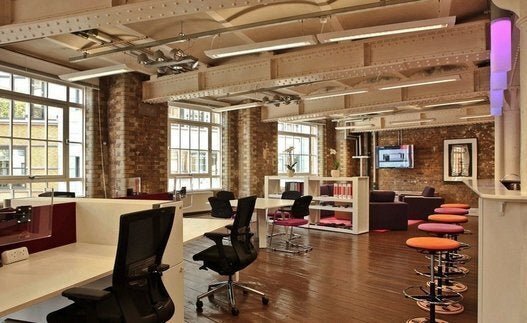
When thinking of millennials, it's common to picture fresh-faced graduates straight out of school and ready to change the planet -- which is why it's easy to forget that this much-discussed generation (anyone born after 1981) has been in the working world for over a decade, with many of them now holding down senior titles and highly influential positions.
So, while much of today's conversation revolves around how millennials are going to shape the future, in actuality, this is a generation that has already made a significant impact on the business world.
Take the office environment, for instance. As the first generation to grow up with the Internet, millennials have always had information and answers right at their fingertips. Therefore, it should come as no surprise they often exhibit far less patience for seemingly needless workplace processes and hierarchical structures than previous generations.
Since joining the workforce, millennials have pushed for open and honest communication and real-time feedback from both their colleagues and superiors, and guess what -- employers listened. Over the past couple years, organizations of all sizes have been knocking down cubicles and moving to open, calm and clean layouts that promote collaboration and innovation. By regularly collecting feedback, businesses have an opportunity to adapt as employee needs evolve, creating a more functional and productive work environment.
In an effort to better attract, motivate and engage employees, many businesses have also started implementing flexible work environments. While all generations of employees are now enjoying the freedom to work when and where they're most productive, this is another perk we have millennials largely to thank for.
Millennials have shown organizations that work flexibility makes smart business sense. They've spent most of their lives using mobile phones and social media to interact with family and friends, so for them it's always been second nature to communicate and collaborate with colleagues virtually from a coffee shop.
At American Express, we recently moved to a new, flexible work culture that gives the majority of our roughly 2,000 Canadian employees the freedom to work virtually. As part of our BlueWork model, not only is our staff free to work from home one or a few days a week, they are encouraged to use a variety of office work spaces that cater best to their work needs at that moment. Instead of sitting at the same desk every day, employees can stay connected with colleagues via instant messenger, conduct meetings virtually, or make calls from their computers.
Without ever compromising their connectivity, employees have the freedom to reserve any workstation, on any floor, allowing for more collaboration between business groups. There are no designated cubicles, and a fifth of every floor is dedicated to open, collaborative spaces, so employees can set meetings in the conference room, grab a couch by the window and/or enjoy a whiteboard brainstorming session over lunch with a colleague.
While this type of flexibility and open collaboration was born from the millennial generation-- as organizations sought to better engage and attract young workers--it's now benefiting workers of all ages and generations.
By bringing teams together to get stuff done faster, employee productivity and engagement has boosted across the board. And, as an added side effect, this new work culture is helping bridge the generation gap.
Bringing different generations together is a critical dimension of diversity, as each one brings their own unique perspectives to the workplace. Boomers, Gen Xers and millennials have remarkably different values and viewpoints. And while this can sometimes create tension, constructive debate between generations also leads to innovative ideas and creative problem solving.
It's easy for people to fall into old habits and do something one way because "that's the way it's always been done," but when you bring different generations together, they challenge each other to do things differently -- and they learn from each other. There's "comfort sharing," where, for example, a millennial might encourage an older employee to try working from home, while a boomer will show a young person the value of a face-to-face meeting.
To foster this type of collaboration and innovation between generations, organizations are now providing the tools, technology and work spaces that best fit their employees' various personal styles.
While millennials are largely responsible for bringing flexible work styles to the workplace -- and thereby changing the business world for the better -- organizations are now going a step further in understanding that there are not just generational differences between employees, but individual differences in how each employee can be best engaged and equipped to be their most productive self.
MORE ON HUFFPOST:
